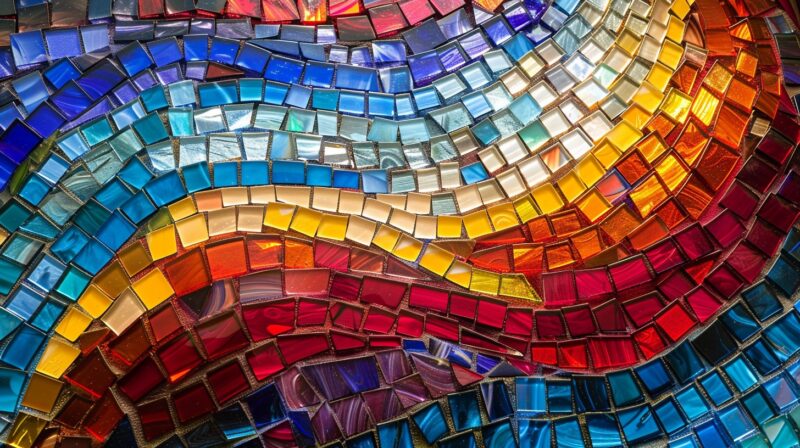Glass mosaic tiles are small, decorative tiles made from glass.
Renowned for their vibrant colors and reflective qualities, these are popular in various applications, including:
- Kitchens
- Bathrooms
- Pools
- Artistic murals
Their versatility and aesthetic appeal make them a favored choice for both residential and commercial spaces.
Raw Materials
The primary components used in the production of glass mosaic tiles include recycled glass, sand, soda ash, and limestone.
Recycled glass is a significant component, offering environmental benefits by reducing the need for new raw materials and minimizing waste.The use of recycled materials not only helps conserve natural resources but also reduces energy consumption and greenhouse gas emissions associated with the manufacturing process.
Sand, soda ash, and limestone are essential for the manufacturing process. Sand provides the silicon dioxide, which is a primary ingredient in glass.
Soda ash reduces the melting temperature of the sand, making the process more energy-efficient.
Limestone is added to improve the durability and chemical resistance of the glass.
The combination of these raw materials results in a high-quality, sustainable product that is both functional and aesthetically pleasing.
The Manufacturing Process
The manufacturing process goes like this:
1. Selection of Raw Materials
The manufacturing process begins with the careful selection of high-quality raw materials.
Ensuring the purity and quality of recycled glass, sand, soda ash, and limestone is crucial for producing superior glass mosaic tiles.
Impurities in the raw materials can lead to defects in the final product, affecting both its appearance and durability.
2. Glass Fusion Process
Once the raw materials are selected, they are melted and blended together in a furnace at high temperatures.
This process, known as glass fusion, transforms the materials into a molten state.
The molten glass is then poured into molds to form the desired shapes and sizes of the mosaic tiles.
3. Kiln Firing and Annealing
After the glass is molded, it undergoes kiln firing and annealing. Controlled heating in the kiln ensures uniform texture and color throughout the tiles.
The annealing process involves slowly cooling the tiles to prevent the formation of cracks and to enhance their structural integrity.
This step is critical to achieving the desired durability and aesthetic qualities.
Types of Glass Mosaic Tiles
Now I want to discuss several types of mosaic tiles.
Pool
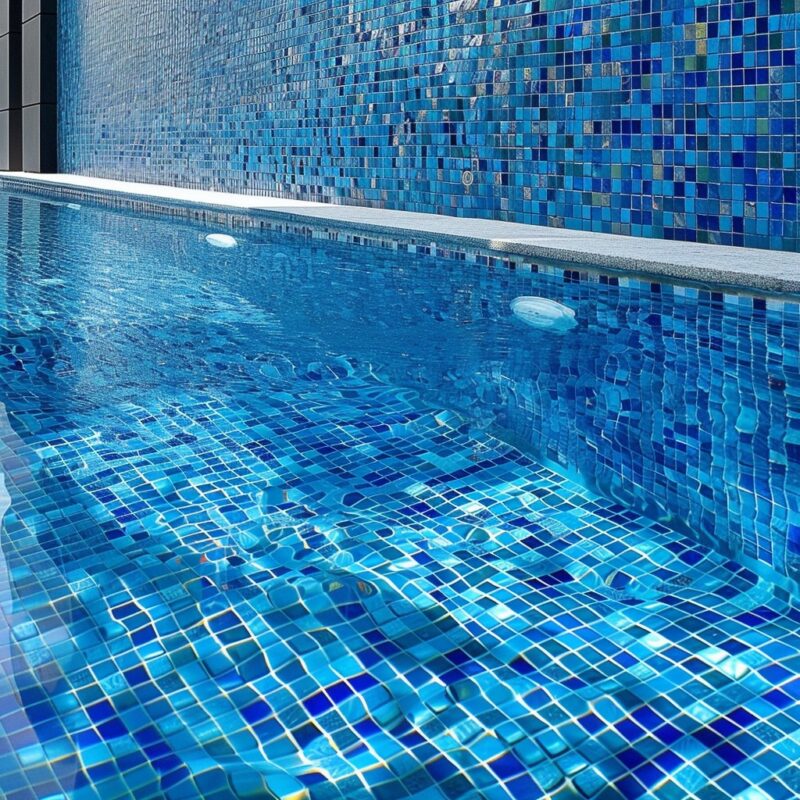
Glass pool tiles are specifically designed for use in swimming pools.
They are characterized by their ability to withstand prolonged exposure to water and pool chemicals.
These not only enhance the visual appeal of the pool with their vibrant colors and reflective properties but also contribute to the overall hygiene of the pool by resisting mold and mildew growth.
Floor
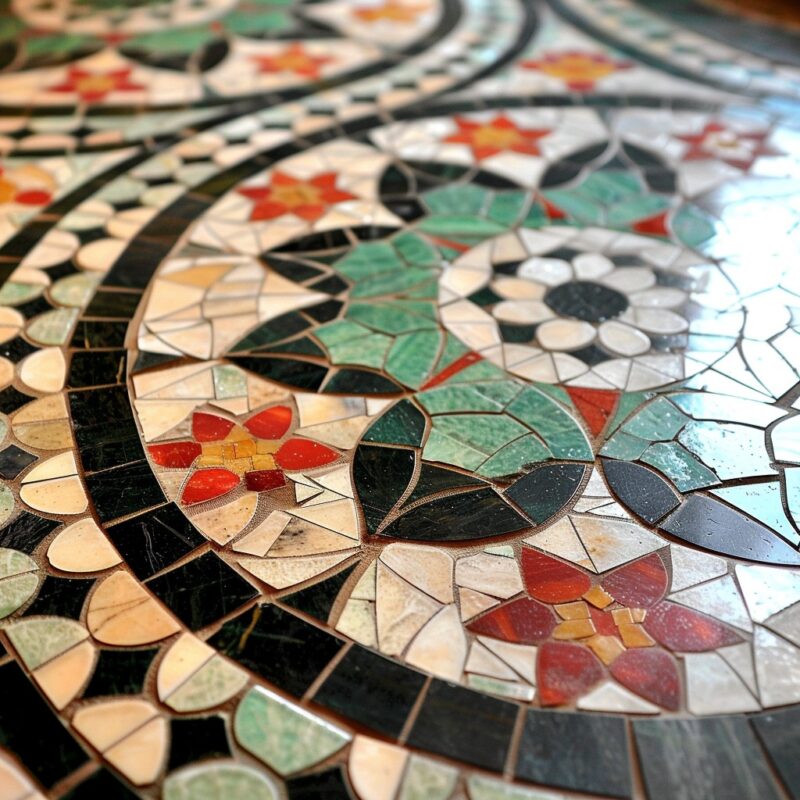
Glass floor tiles are durable and suitable for use in areas with high foot traffic, such as home bathrooms.
They are engineered to be strong and slip-resistant, making them a practical and stylish choice for flooring.
The durability of these ensures they can withstand the wear and tear of daily use while maintaining their beauty over time.
Wall
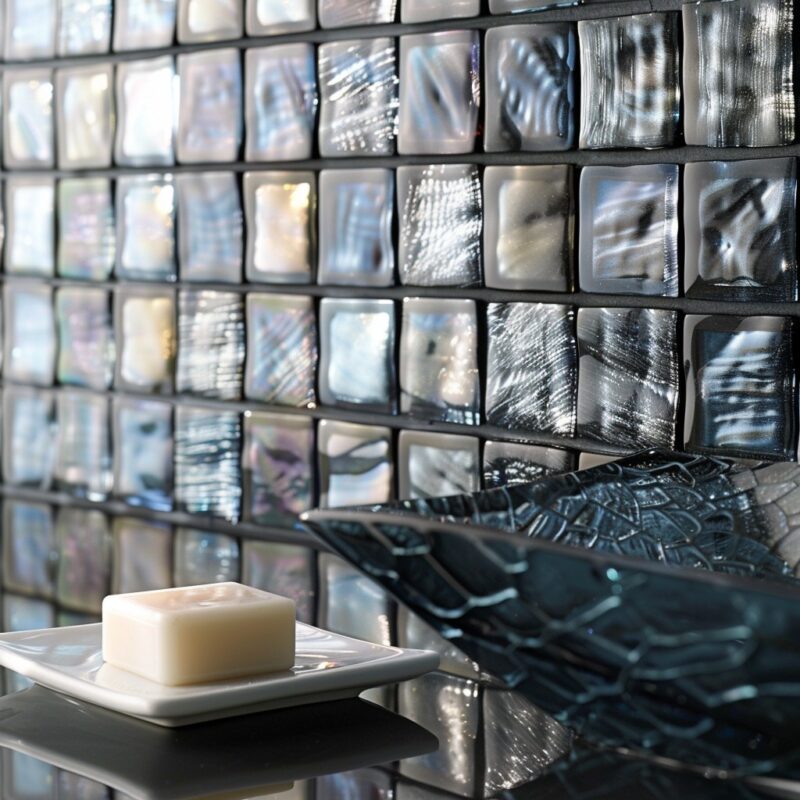
Glass wall tiles offer a wide range of decorative options.
Unlike floor tiles, they do not need to meet strict safety standards for slip resistance, allowing for more creative freedom in design.
These tiles can be used to create stunning visual effects on walls, adding depth and interest to any space.
Recycled Glass
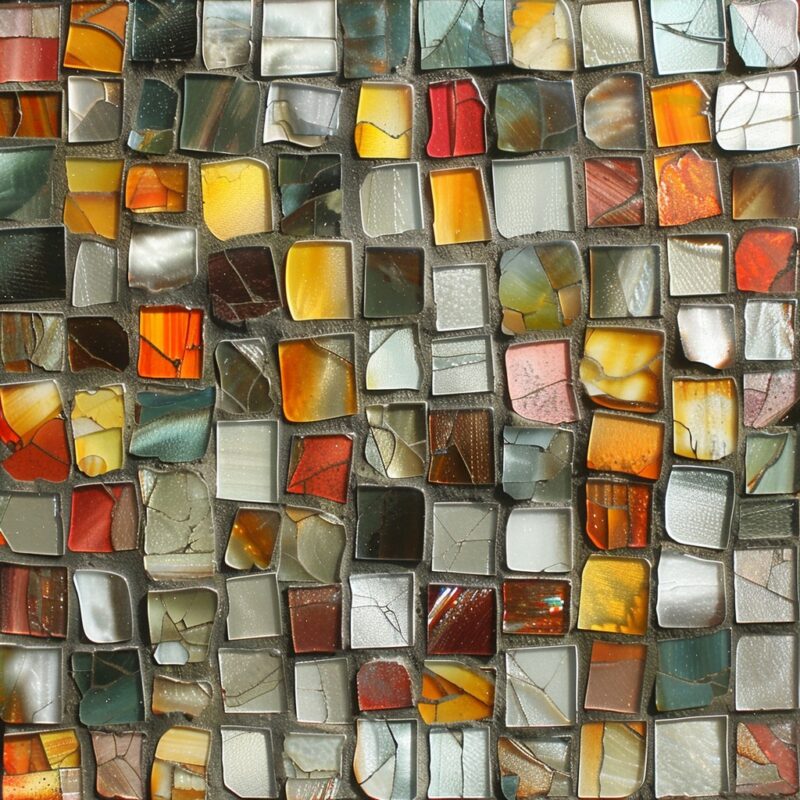
Recycled glass tiles are an eco-friendly option that combines sustainability with unique aesthetics.
Made from reclaimed glass, these tiles contribute to environmental conservation while offering a distinct look.
The use of recycled materials gives each tile a one-of-a-kind appearance, making them a popular choice for those seeking both beauty and sustainability.
Finishing Techniques
Finishing techniques play a crucial role in the final appearance and performance.
Polishing and smoothing processes enhance the natural luster of the glass, resulting in a glossy, reflective surface.
These techniques not only improve the aesthetic appeal of the tiles but also contribute to their durability by removing any sharp edges and imperfections.
The finishing process also involves applying coatings that enhance their’ resistance to stains and scratches.
It ensures that the tiles remain beautiful and easy to maintain over time.
High-quality finishing techniques are essential for producing glass mosaic tiles that meet the demands of both functional and decorative applications.
Advantages of Glass Mosaic Tiles
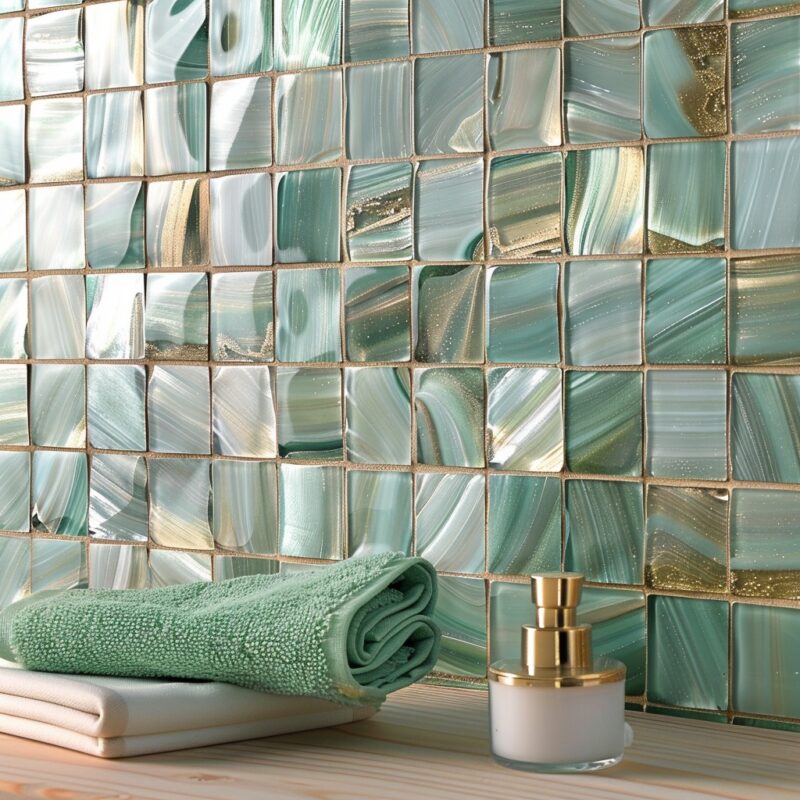
Before you can choose these, you should be aware of the advantages.
Durability and Longevity
Glass mosaic tiles are known for their exceptional durability and longevity.
They are resistant to wear and water, making them ideal for use in wet environments such as bathrooms and pools.
The robust nature of these ensures that they can withstand heavy use without losing their visual appeal.
Easy Maintenance
One of the significant advantages of these tiles is their ease of maintenance.
The smooth, non-porous surface makes them resistant to stains and easy to clean.
Regular cleaning routines typically involve simple wiping with a damp cloth, ensuring that the tiles remain pristine and hygienic.
Hygienic Properties
They offer excellent hygienic properties.
Their non-porous surface prevents the growth of bacteria and mold, making them a hygienic choice for areas prone to moisture, such as kitchens and bathrooms.
Aesthetic Appeal
The aesthetic appeal is unparalleled.
Their timeless elegance and ability to enhance the perception of space make them a popular choice for designers and homeowners.
The wide range of mosaic patterns, colors, and finishes available allows for endless creative possibilities, making each installation a unique work of art.

